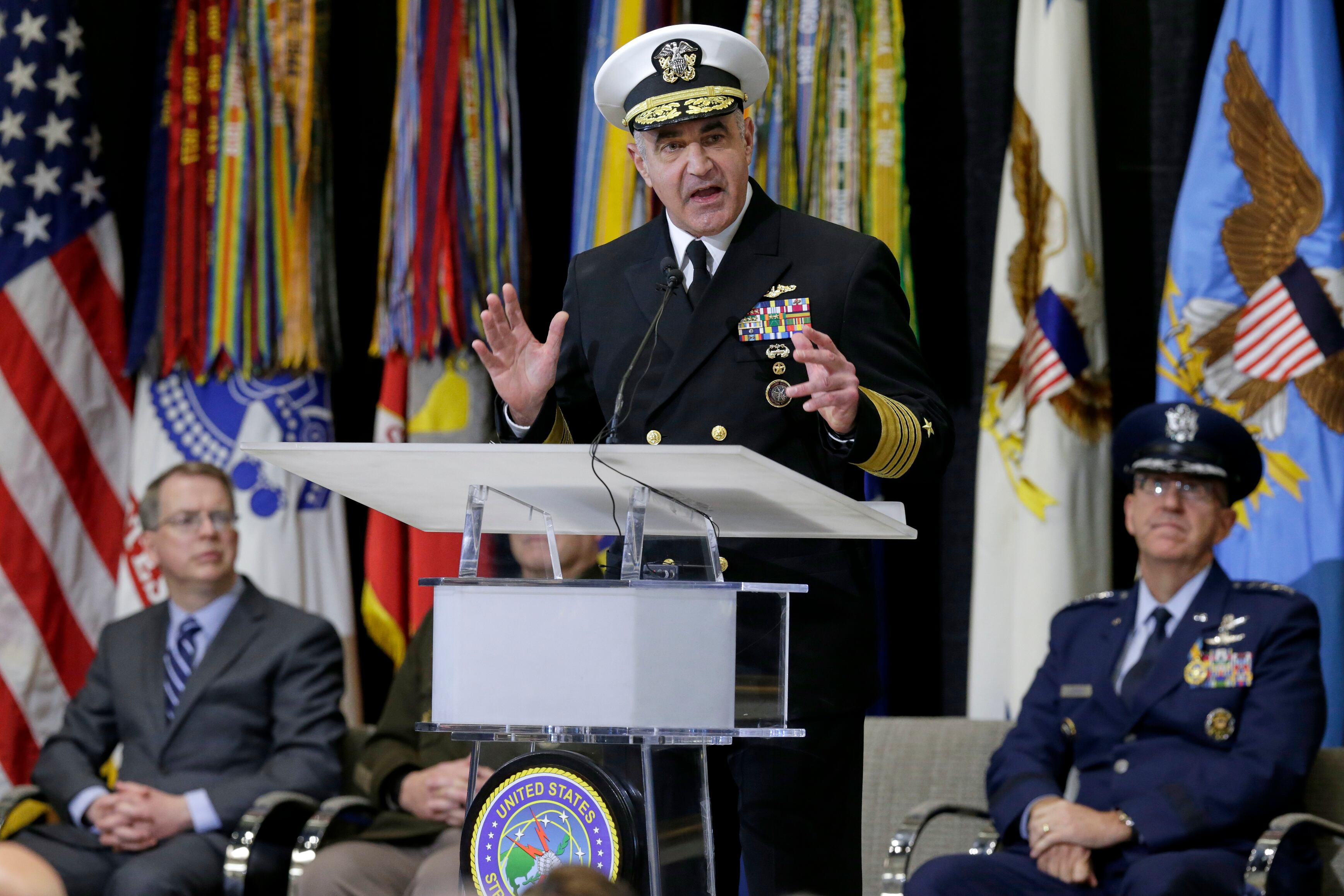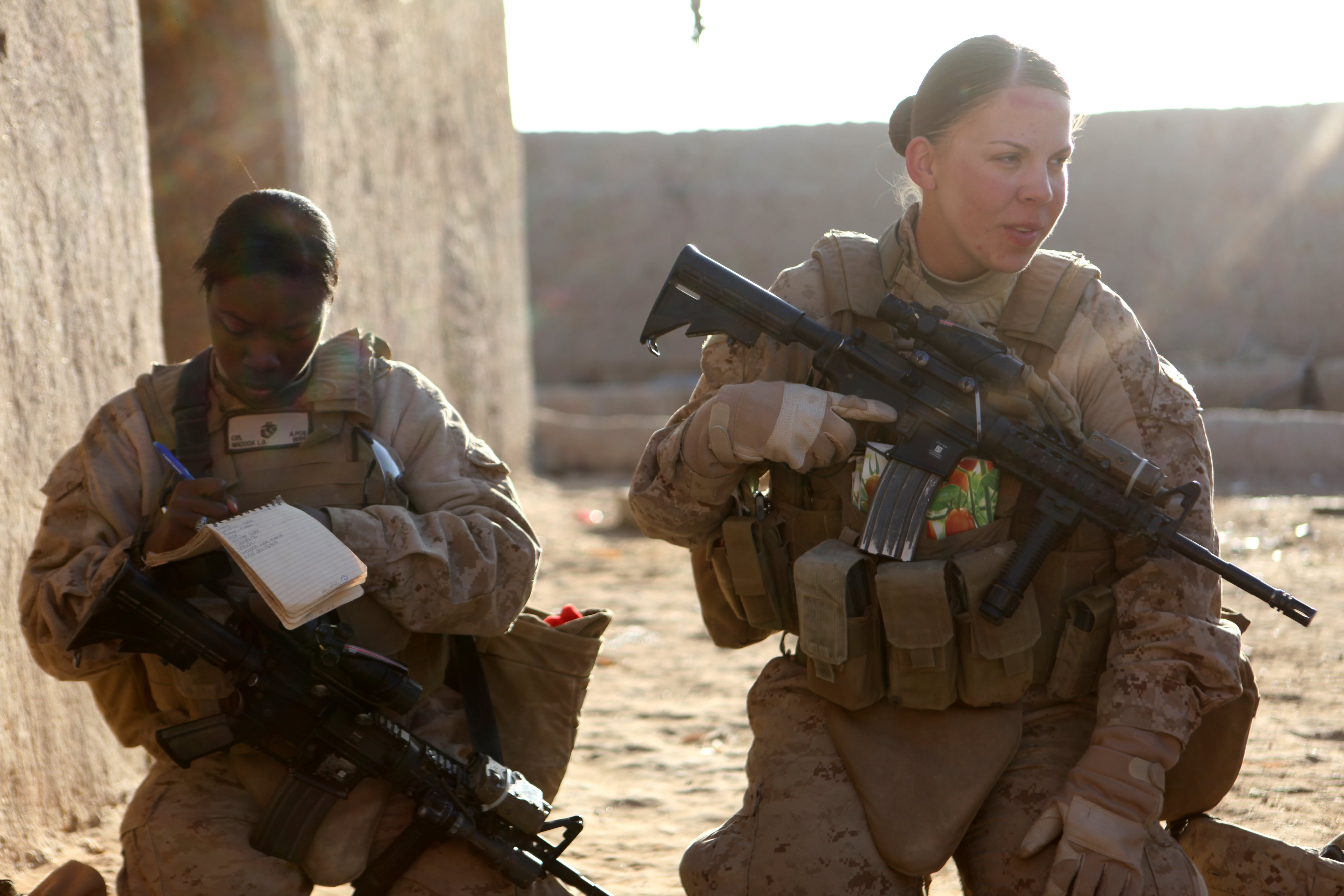Don’t count on the U.S. military returning to the pre-COVID-19 status quo, according to the commander of U.S. Strategic Command, Adm. Charles “Chas” Richard.
“I’m not sure that we’re ever going to go back to the way we were before,” Richard told reporters at the Pentagon Monday, noting that there’s a greater understanding now about the virus and the potential for a vaccine.
Richard, who said the military is “very well-postured” to continue operating under COVID-19 precautions “indefinitely,” said that there are some measures stemming from the COVID-19 pandemic that have proven successful and will likely linger once the threat of the virus is gone.
“We’ve learned some things along the way that I don’t want to go back on, right?” Richard said. “So our ability to operate distributed and remotely, particularly administratively, has been greatly enhanced. We have finally crossed the bridge in terms of being able to do some teleworking.”
For example, Richard said his personnel team will never all come into the office again.
“We’re just more efficient when we operate in a distributed fashion,” Richard said. “No, I don’t think that we’re going back to the way that we used to do business before, and in some cases I don’t think we want to.”
Richard also said the Pentagon began eyeing a pandemic plan in December.
“The Department of Defense has a plan for just about everything. We had a plan in place for a pandemic, infectious disease,” Richard said. “And we simply, very early on, December timeframe, started looking through what if scenarios and started devising mechanisms, strategies to address that. And that process served us very well.”
In late January, the Pentagon distributed an advisory for service members with recommendations to mitigate the threat of COVID-19. The guidance advised Department of Defense personnel who had been exposed or who had recently returned from China — where the virus originated — and now were experiencing COVID-19 symptoms to seek medical attention immediately.
The guidance, which said the Pentagon was keeping a close eye on the spread of the virus, also encouraged troops to receive a flu vaccine and practice thorough hand washing.
Weeks later on Feb. 26, a 23-year-old U.S. soldier stationed at Camp Carroll in South Korea became the first service member to test positive for the virus. The soldier was ultimately declared virus-free in April following 49 days of isolation.
During the course of the pandemic, the Pentagon has implemented several measures to mitigate the spread of the virus, including implementing new restriction-of movement policies and disinfecting procedures.
Additionally, service members are instructed to wear masks when social distancing isn’t possible. The masks have made a difference — and could be used after the pandemic ends, according to Rear Adm. Louis Tripoli.
“It makes sense, doesn’t it?” Tripoli, U.S. Indo-Pacific Command’s top doctor, told reporters last month. “I think when it comes to airborne infections like this ... I think discoveries with the masks and the hygiene, I do believe they’re going to stick in one way or another. We’re finding out more and more about the benefits of this.”
According to the Pentagon, more than 41,500 service members have tested positive for the virus and seven service members have died. For Department of Defense civilian personnel, the Pentagon reports there have been more than 9,000 cases.
Likewise, the Pentagon reports there have been more than 5,500 cases among dependents and nearly 4,000 cases among contractors.
As of Monday morning, there have been 55 civilian employees, 21 contractors and seven dependents who have died from COVID-19. according to the latest Pentagon figures.




